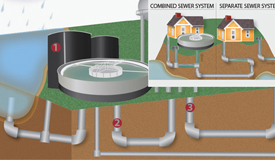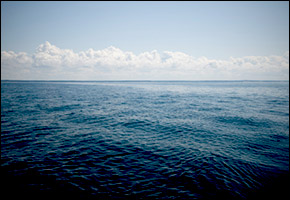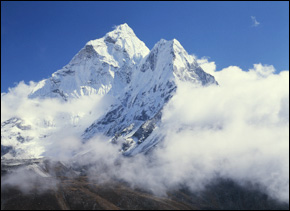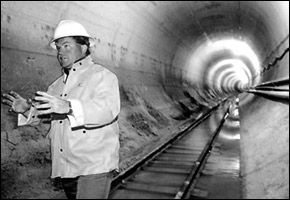Plant a forest, save an orangutan, make rain?

Willie Smits’ plan to save the orangutans of Borneo by planting a new forest has had an unintended side effect: rain. Smits, a forestry scientist turned great ape conservationist, began his project to protect the orangutans nearly 20 years ago, when he rescued an abandoned infant in the street markets of Balikpapan.
“She was so sickly, just gasping for breath; they thought she was going to die so they just threw her away,” Smits told National Geographic. Uce, as she became known, was the catalyst for Smits’ career change.
Twenty years later, he’s realized his dream of a great ape rehabilitation center and safe haven near Balikpapan. A newly planted forest, some 2000 hectares (5000 acres), has become a tourist attraction, a training center and a new forest for the “rewilded” animals.
“Six years ago this was just grassland,” he told Radio Netherlands. Now the forest’s canopy teams with life. He planted some 1040 different tree species and reintroduced rescued orangutans to the new environment. Uce was the first to be rewilded; since then she’s given birth to a new generation of nearly-wild animals.
But the new forest isn’t just providing a habitat for the animals, it now generates enough rain to supply Balikpapan with much needed drinking water.
“Yes, it sounds incredible, but we’ve really changed the climate here,” Smits explained. “Our measurements show that after six years the cloud cover over Samboja Lestari has increased by 12 percent. The amount of rainfall last year actually came out at 25 percent more. The new forest cools the atmosphere, and that attracts rain clouds.”
Through an agreement with the Dutch water company WMD, Smits plans to pipe the clean water coming out of the forest to nearby Balikpapan. And the majority of the water purification process is done by the forest itself.
“We’ve built lots of very small dams so the water infiltrates the soil as much as possible,” Smits told Radio Netherlands. “Then the roots and the leaf litter on the forest floor filter the water. It then slowly seeps into little streams and by then it’s nice clean water. If it were to flow quickly over the surface it would carry a huge amount of mud with it, and then it would be a lot more expensive to turn it into drinking water.”
The Dutch foreign ministry is supplying some €20 million (USD 26.8 million) for additional pipelines and filtration technology.
Read more here.
Source : Radio Netherlands
Circle of Blue’s east coast correspondent based in New York. He specializes on water conflict and the water-food-energy nexus. He previously worked as a political risk analyst covering equatorial Africa’s energy sector, and sustainable development in sub-Saharan Africa. Contact: Cody.Pope@circleofblue.org








Leave a Reply
Want to join the discussion?Feel free to contribute!